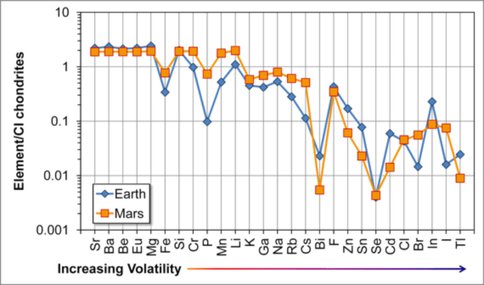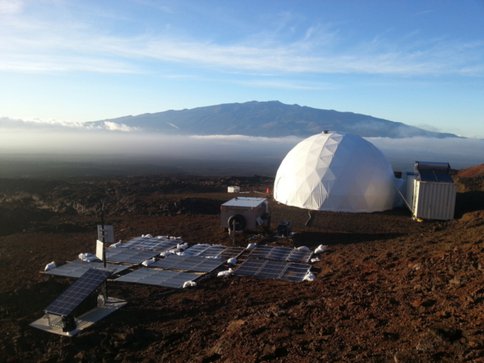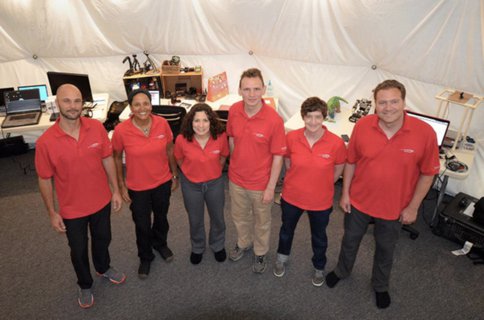2013 Annual Science Report
 University of Hawaii, Manoa
Reporting | SEP 2012 – AUG 2013
University of Hawaii, Manoa
Reporting | SEP 2012 – AUG 2013
Water and Habitability of Mars and the Moon and Antarctica
Project Summary
Water plays an important role in shaping the crusts of the Earth and Mars, and now we know it is present inside the Moon and on its surface. We are assessing the water budgets and total inventories on the Moon and Mars by analyzing samples from these bodies.
We also study local concentrations of water ice on the Moon, Mars, and at terrestrial analogue sites such as Antarctica and Mauna Kea, Hawaii. We are particularly interested in how local phenomena or microclimates enable ice to form and persist in areas that are otherwise free of ice, such as cold traps on the Moon, tropical craters with permafrost, and ice caves in tropical latitudes. We approach these problems with field studies, modeling, and data analysis. We also develop new instruments and exploration methods to characterize these sites. Several of the terrestrial field sites have only recently become available for scientific exploration.
HI-SEAS (Hawaii Space Exploration Analog and Simulation, hi-seas.org) is a small habitat at a Mars analog site in the saddle area of the Island of Hawaii. It is a venue for conducting research relevant to long-duration human space exploration. We have just completed our first four-month long mission, and are preparing for three more, of four, eight and twelve months in length. The habitat is a 36’ geodesic dome, with about 1000 square feet of floor space over two stories. It is a low-impact temporary structure that can accommodate six crewmembers, and has a kitchen, a laboratory, and a flexible workspace. Although it is not airtight, the habitat does have simulated airlock, and crew-members don mockup EVA suits before going outside. The site is a disused quarry on the side of a cinder/splatter cone, surrounded by young lava fields. There is almost no human activity or plant life visible from the habitat, making it ideal for ICE (isolated/confined/extreme) research.
Project Progress
Water in the Moon and on Mars
The detection of water in lunar volcanic glasses, apatites, and melt inclusions has implications for planetary accretion, the source of water to the Earth, and the role of water in lunar evolution. Recent work shows that the mare basalts were richer in water than previously thought, and water in lunar apatites is enriched in deuterium (2H, or D) with respect to Earth, possibly due to the addition of D-rich material early in the Moon’s history. As the final fractionate of the global lunar magma ocean, the KREEP component (so named for its enrichment in K, Rare Earth Elements, and P) is highly enriched in incompatible elements compared to other lunar materials. Because water behaves like an incompatible element , KREEP-rich rocks ought to be enriched in water. Here, we present water content and D/H measurements of KREEP-related lunar materials. Our measurements of water and D/H in the mineral apatite [Ca5(PO4)3(F,Cl,OH)] show that KREEP-related materials are quite dry, which supports modeling results that suggest that the global lunar magma ocean was low in water, and that water is heterogeneously distributed in the lunar interior (Fig. 1).
An accurate assessment of the bulk chemical composition of Mars is fundamental to understanding planetary accretion, differentiation, mantle evolution, the nature of the igneous parent rocks that were altered to produce sediments on Mars, and the initial concentrations of volatiles such as H, Cl and S, important constituents of the Martian surface. We reviewed the three main approaches that have been used to estimate the bulk chemical composition of Mars: geochemical/cosmochemical, isotopic, and geophysical. The standard model is one developed by H. Wänke and G. Dreibus in a series of papers, which is based on compositions of Martian meteorites. Since their groundbreaking work, substantial amounts of data have become available to allow a reassessment of the composition of Mars from elemental data, including tests of the basic assumptions in the geochemical models. The results adjust some of the concentrations in the Wänke-Dreibus model, but in general confirm its accuracy. Bulk silicate Mars has roughly uniform depletion of moderately volatile elements such as K (0.6 x CI), and strong depletion of highly volatile elements (e.g., Tl). The highly volatile elements are within uncertainties uniformly depleted at about 0.06 CI abundances (Fig. 2). The highly volatile chalcophile elements are likewise roughly uniformly depleted, but with more scatter, with normalized abundances of 0.03 CI. Of particular significance to our astrobiology research, we found that bulk planetary H2O is much higher than estimated previously: it appears to be slightly less than in Earth, but D/H is similar in Earth and Mars, indicating a common source of water-bearing material in the inner solar system. K/Th ranges from ∼3000 to ∼5000 among the terrestrial planets, a small range compared to CI chondrites (19,000). FeO varies throughout the inner solar system: ∼3 wt% in Mercury, 8 wt % in Earth and Venus, and 18 wt % in Mars. These differences can be produced by varying oxidation conditions, hence do not suggest the terrestrial planets were formed from fundamentally different materials. The broad chemical similarities among the terrestrial planets indicate substantial mixing throughout the inner solar system during planet formation, as suggested by dynamical models.
Physical Mechanisms for Water Storage on the Moon
The geographic distribution of H-bearing regolith in the polar regions of the Moon shows only a partial or ambiguous correlation with permanently shadowed areas, thus suggesting that ice is not simply trapped by low temperature but another mechanism may play a role in locally enhancing water concentrations. Under suitable conditions, volatile water molecules can be pumped down into the regolith by day-night temperature cycles, leading to an enrichment of H2O in excess of the surface concentration. We use model calculations to evaluate this storage mechanism quantitatively and determined the ideal temperature conditions for pumping (Fig. 3). The surface concentration of water molecules is dynamically balanced based on sublimation loss, space weathering, and supply. The temperature conditions for pumping complement those of the classical cold traps. We use maps of measured surface temperature to determine the areas on the Moon where signficant pumping can be expected. Although the cummulative area where pumping can occur is large in both polar regions, the efficiency of this pump is low; at best a few percent of the H2O delivered to the surface could have accumulated in the near-surface layer in this way.
Permafrostenabling Microclimates in Tropical Craters
We study the microclimates in cinder cones in the summit region of Mauna Kea, Hawaii. Several of these cinder cones harbor patches of permafrost. Shadowing by three-dimensional topography and micrometeorology create exceptionally cold areas. These locations and phenomena serve as analogues for Mars, but are also of interest in their own right. Data loggers were emplaced in several craters to record air and regolith temperatures. The first 14 months of data include the coldest temperatures ever reported from the Hawaiian Islands. We developed an autonomous infrared camera system for field work (Fig. 4). Time-lapse infrared and visible cameras map the temperature distribution in the craters night and day. We have successfully acquired temperature fields inside several craters over 24 hour periods.
Ice Caves on Mauna Loa
Permafrost has rarely ever been reported from Hawaii. We study three perennial ice lakes inside lava tube caves on Mauna Loa, Hawaii and the microclimates responsible for the sub-freezing temperatures (Fig. 5). These are the world’s geographically most isolated ice caves, largely unknown to the scientific community. We have mapped the cave systems, acquired continuous temperature and humidity records for 16 months, measured longitudinal temperature profiles, ice, and rock surface temperatures, carried out infrared temperature mapping inside the caves and periodic ice level monitoring.
Antarctic Dry Valley Studies
We participated in a project to install thermal and visible time-lapse systems developed at UH in the Antarctic Dry Valleys (Fig. 6). These systems were placed at multiple locations to study microclimates and water interactions within gullies in the dry valleys. The microclimates serve as analogs for surface processes on Mars. The infrared imaging will characterize the interplay between water, ice, and geologic formations on the landforms. In addition to the planned installs of time-lapse systems, team member Hermalyn refurbished and repaired, several weather stations were repaired, participated in other research focus areas of the projects, including rock, soil, and water sampling to more fully understand the water cycle on the groundwater-dominated dry valley terrain (analogs to the Martian slope streaks). The main field work was funded by NSF, but the camera development was funded by our team.
Artificial Impacts in Permanently Shadowed Areas of the Moon
A controlled, high velocity impact by a (retired) spacecraft into the lunar surface would elucidate the nature of lunar volatiles, including water ice, and team members have been working with European colleagues to persuade the European Space Agency that the best option for the disposal of the Herschel Telescope after it runs out of cryogens was a controlled lunar impact. The desired impact site is a cold, shadowed location, but the impact plume needs to be sunlit and observable from Earth, which places significant constraints on possible impact locations. We have carried out extensive calculations of shadow heights to identify potential impact sites that simultaneously satisfy all necessary constraints (Fig. 7). Our work seeks to establish whether a single impactor could reach a scientifically rewarding impact site, where water ice can be expected and the impact plume could be observed from Earth.
HI-SEAS Habitat Studies
This has been a very busy year for the HI-SEAS project. A year ago, we were in the process of doing an environmental assessment of the proposed habitat site, and the habitat itself was still in the design phase. Since then, we have completed the environmental assessment (including archaeological and arthropod surveys) with a finding of no significant impact, acquired all the necessary permits, finished the design, and installed the habitat on the site (Fig. 8). The first crew (selected in early 2012) completed their training and cultural orientation, and entered the habitat on April, 15 2013 (Fig. 9-10). They completed their very successful 120-day mission on August 13.
The central study, funded by the NASA Human Research Program (HRP), compared two different food systems in terms of nutrition, satisfaction, water use, energy use, preparation/clean-up time and equipment required. The results of this trade study will allow NASA to choose food systems for long-duration missions, based on the constraints of the particular mission. In addition to the central study, the crew completed ten ‘opportunistic’ (i.e. unfunded) studies on a variety of topics, including an evaluation of anti-microbial textiles and an investigation of the effect of light doses on sleep disruption and circadian cycles. The crew also carried out a remote rover navigation demonstration with the Canadian Space Agency.
This summer, HI-SEAS received three more years of funding ($1.2M) from NASA HRP for a proposal entitled “Key contributors to the maintenance and regulation of team function and performance on long duration exploration missions.” The next three missions will be four, eight and twelve months in length, and we are now in the process of crew selection and preparation for the first of these missions.

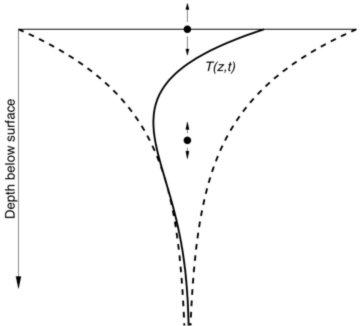
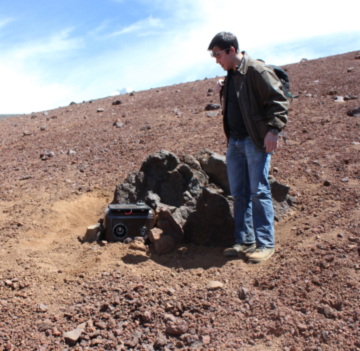
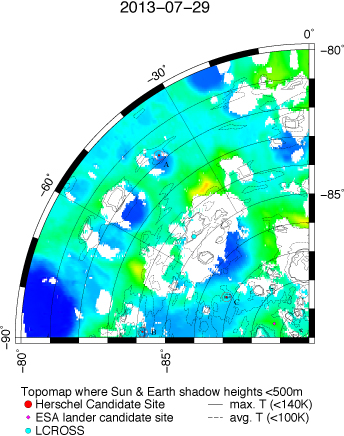

Publications
-
Bergonio, J. R., Rottas, K. M., & Schorghofer, N. (2013). Properties of martian slope streak populations. Icarus, 225(1), 194–199. doi:10.1016/j.icarus.2013.03.023
-
Schorghofer, N., & Aharonson, O. (2014). THE LUNAR THERMAL ICE PUMP. The Astrophysical Journal, 788(2), 169. doi:10.1088/0004-637x/788/2/169
-
Strycker, P. D., Chanover, N. J., Miller, C., Hamilton, R. T., Hermalyn, B., Suggs, R. M., & Sussman, M. (2013). Characterization of the LCROSS impact plume from a ground-based imaging detection. Nat Comms, 4. doi:10.1038/ncomms3620
-
Taylor, G. J. (2013). The bulk composition of Mars. Chemie der Erde – Geochemistry, 73(4), 401–420. doi:10.1016/j.chemer.2013.09.006
- Bowles, N., Hermalyn, B., Landgraf, M., Hurley, D., Schorghofer, N., Meech, K.J., Burchell, M., Pilbratt, G., Oberst, J., Thomas, I., Berdyugina, S., Wooden, D. & Heldmann, J. (2014). Revealing volatiles from below: The rationale for use of spacecraft at the second Earth-Sun Lagrange point as a controlled lunar impactor. Icarus.
- Robinson, K.A., Taylor, G.J., Nagashima, K. & Huss, G. (2013). Water in evolved lunar rocks: Evidence for a dry lunar magma ocean. Nature Geoscience.
-
PROJECT INVESTIGATORS:
-
PROJECT MEMBERS:
Kimberly Binsted
Project Investigator
Norbert Schorghofer
Project Investigator
Jeff Taylor
Project Investigator
Lydia Hallis
Co-Investigator
Brendan Hermalyn
Co-Investigator
Oded Aharonson
Collaborator
Bryan Caldwell
Collaborator
Bruce Halpern
Collaborator
Jean Hunter
Collaborator
Katharine Robinson
Collaborator
Brian Shiro
Collaborator
Kenji Yoshikawa
Collaborator
-
RELATED OBJECTIVES:
Objective 1.1
Formation and evolution of habitable planets.
Objective 2.1
Mars exploration.
Objective 3.1
Sources of prebiotic materials and catalysts
Objective 5.3
Biochemical adaptation to extreme environments
Objective 6.1
Effects of environmental changes on microbial ecosystems
Objective 6.2
Adaptation and evolution of life beyond Earth
Objective 7.1
Biosignatures to be sought in Solar System materials
